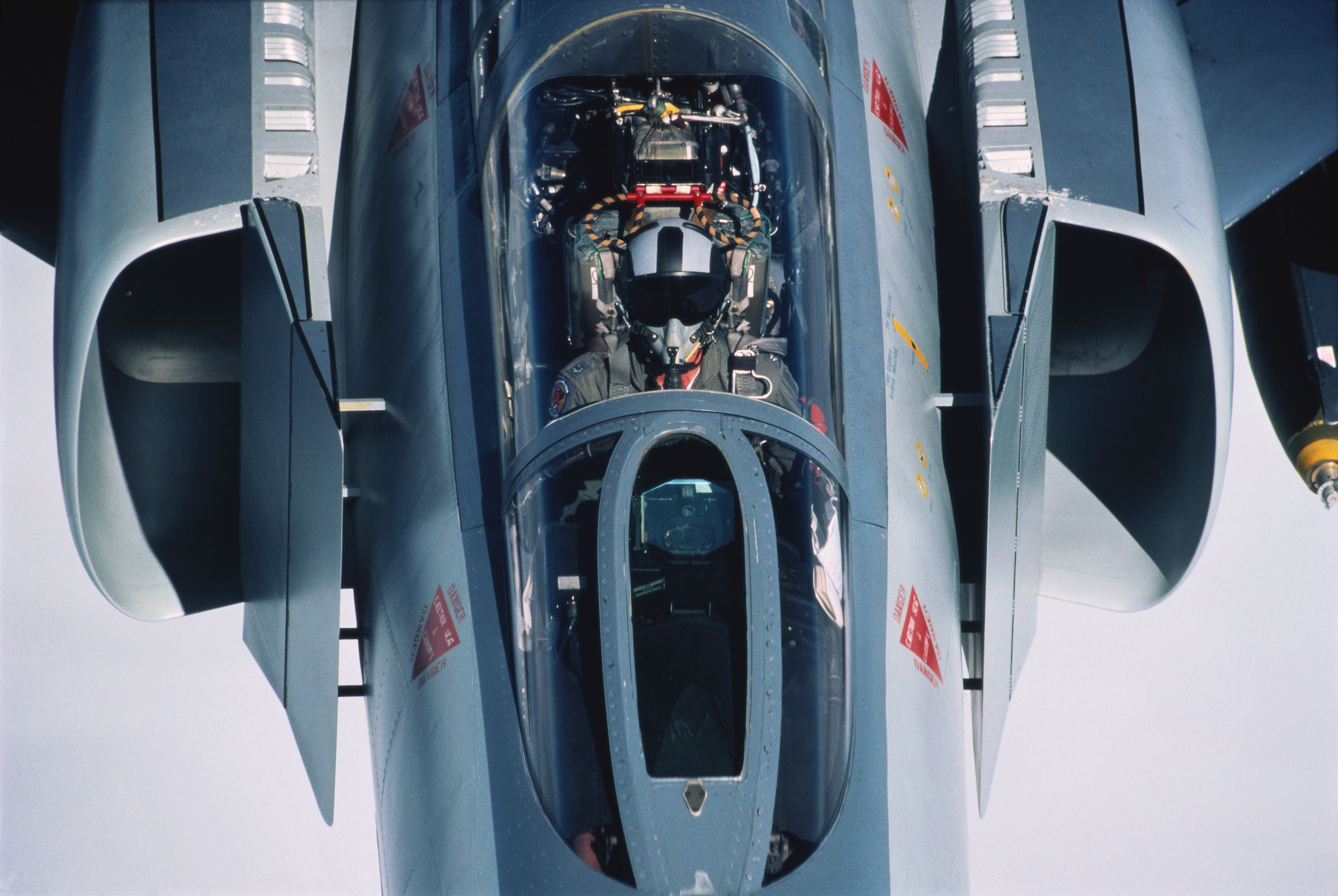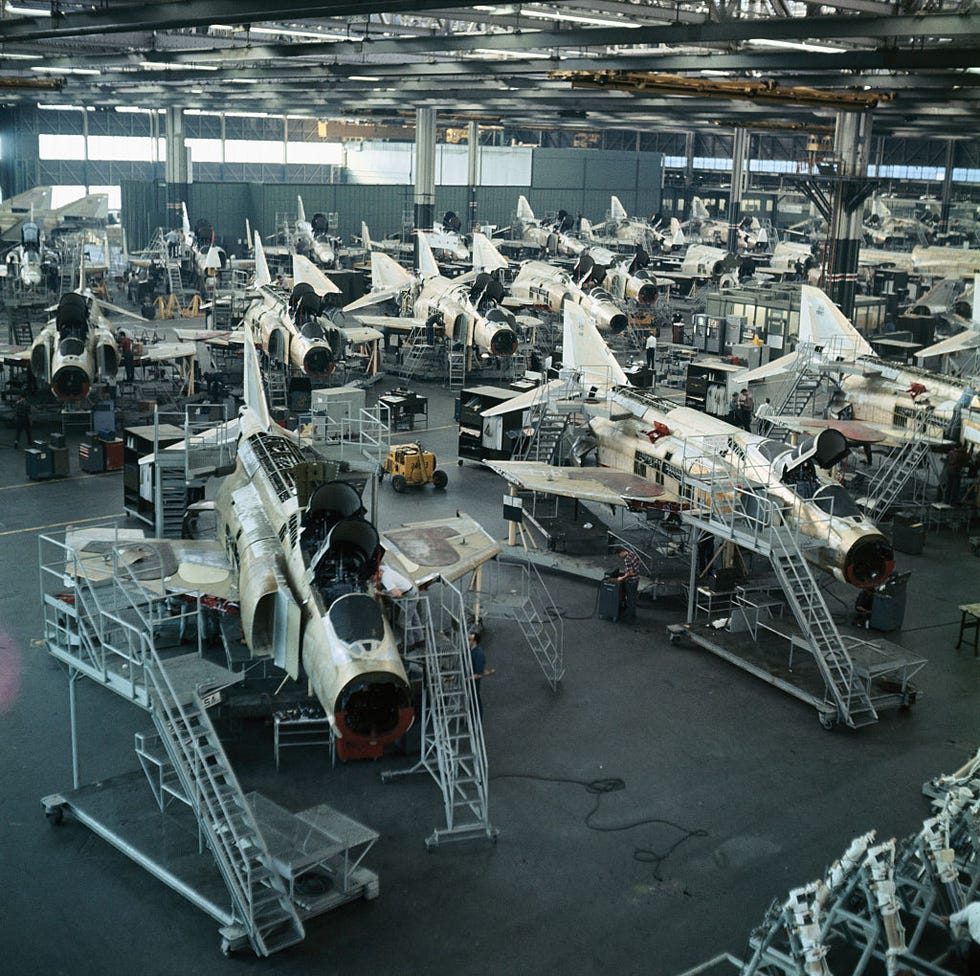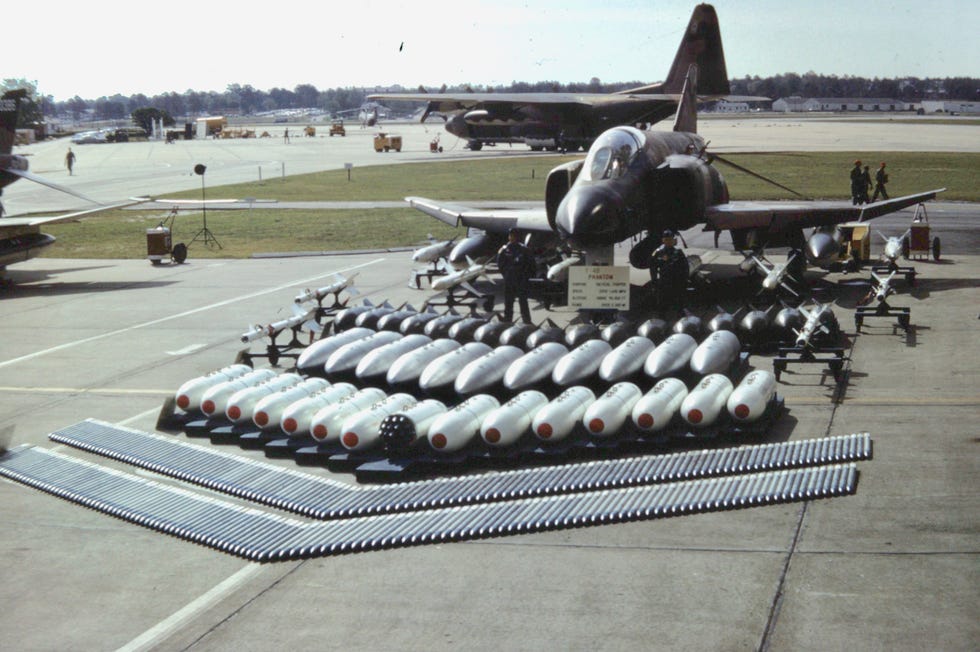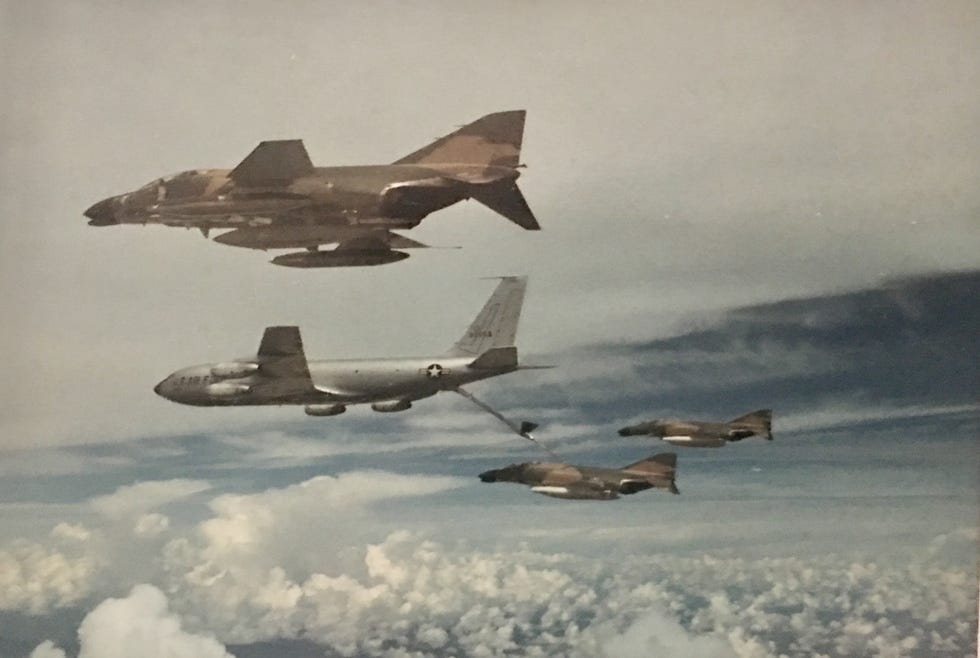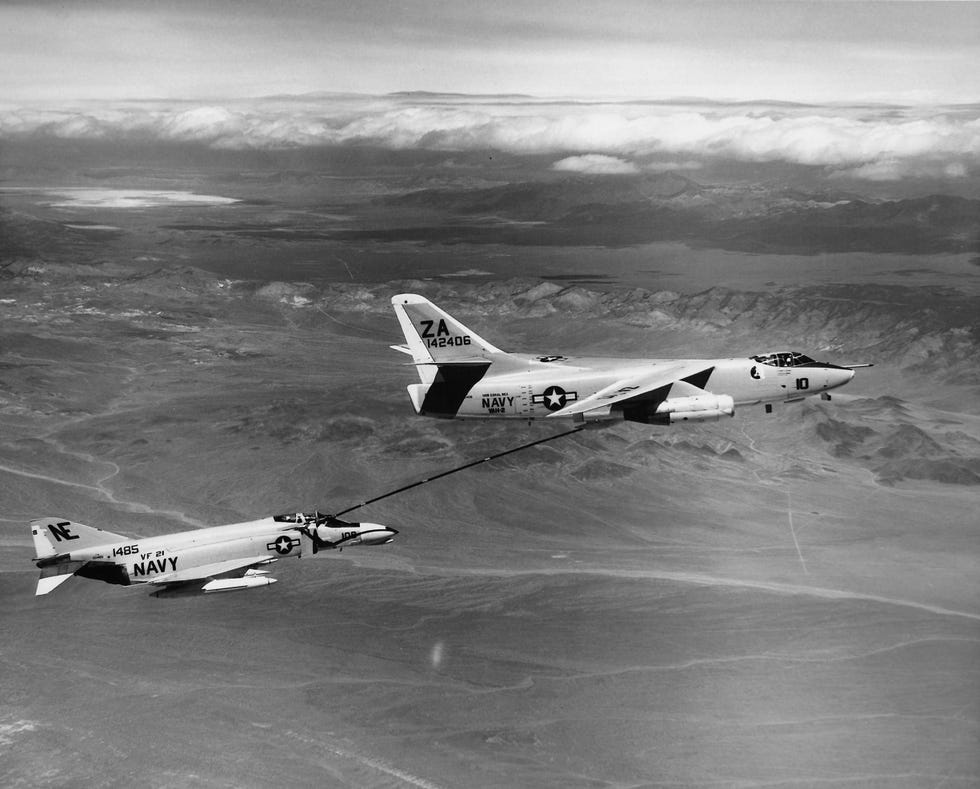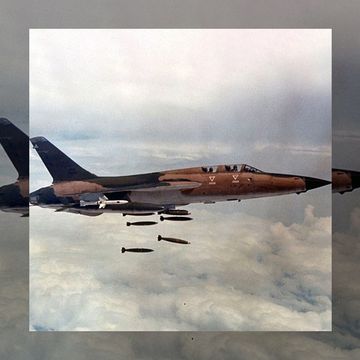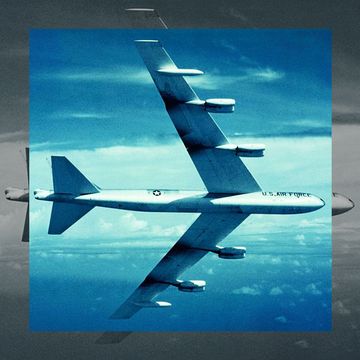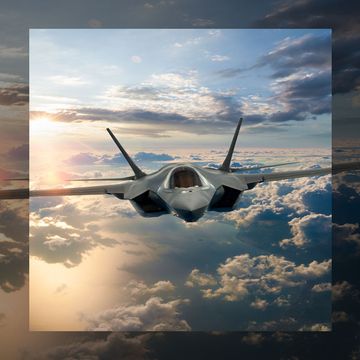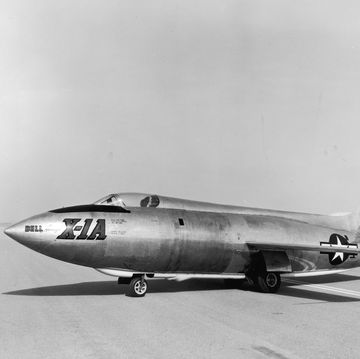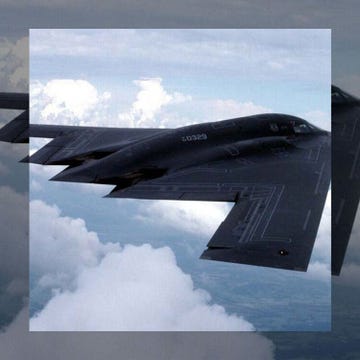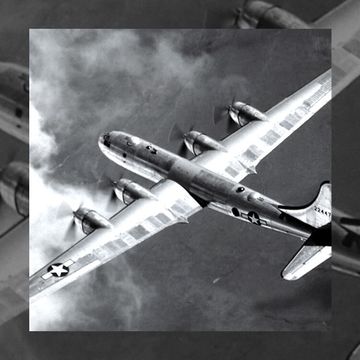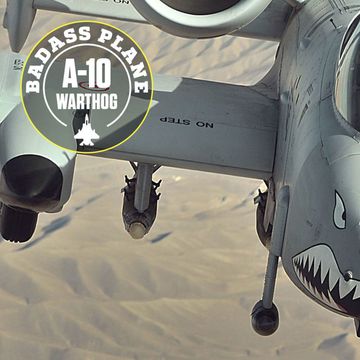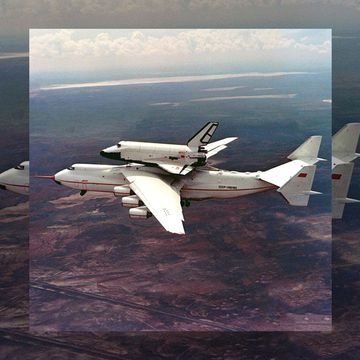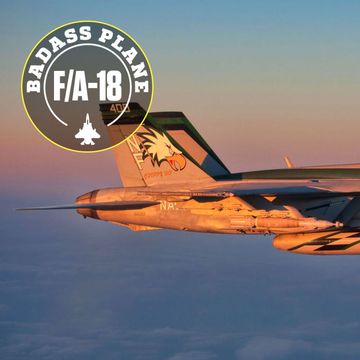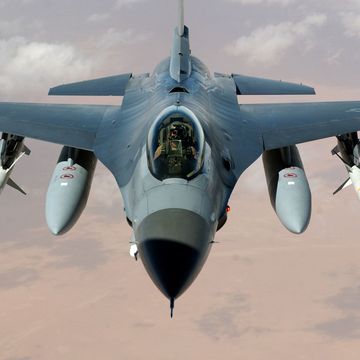Flying Brick. Lead Sled. Rhino. Double Ugly. If nicknames are destiny, then the F-4 Phantom II fighter was cursed at birth.
Even its official name was ironic. “Phantom” evokes an image of stealth and subtlety, a supernatural nemesis that strikes without warning. But the F-4 was anything but stealthy or subtle; it was a big fighter that muscled its way through combat.
Along the way, it became one of the most influential aircraft in history.
Through the tense Cold War years of the 1960s and 1970s, the Phantom was the symbol of Western tactical airpower. Between 1958 and 1981, 5,195 Phantoms were built in a dozen variants and flown by a dozen nations, making it the most prolific supersonic American warplane ever built.
“The Phantom has become, arguably, the most important fighter aircraft of the second half of the twentieth century,” aviation historian Robert Dorr writes in his 1989 book, The McDonnell F-4 Phantom. More than 60 years after its first flight, the F-4 still flies in several air forces around the world.
Beauty and the Beast
The Phantom is still beloved for many qualities. Beauty is not one of them. Its fat nose gave the F-4 a face that only a mother (or aircraft designer) could love. Compared to the sleek F-16 or the gracefully curved F-35, the F-4’s upward-sloping wing and downward-sloping tail looked like a model aircraft kit that had been assembled wrong. One British admiral even asked whether the aircraft had been delivered upside-down. Others said the Phantom proved a brick could fly if you stuck two big engines on it.
To understand the Phantom story, we need to step back into an era of black-and-white televisions and closet-sized computers. When the Phantom first appeared on the drawing board in 1953, fighter jets had been around for less than a decade.
The F-4 began life as a redesign of the troubled F3H Demon carrier-based fighter from McDonnell Aircraft Corp. (later McDonnell Douglas, which eventually merged with Boeing). The Navy ordered two prototypes of the “Super Demon”—a primordial Phantom—as an all-weather fighter-bomber.
There was no reason to expect the new plane to become a classic; dozens of new fighter and bomber designs appeared in the 1950s. Most would remain prototypes, quickly fade into obsolescence, or appear in museum displays. But three pivotal moments would shape the Phantom saga.
The first came in 1955, when the U.S. Navy asked McDonnell Aircraft for a carrier-based interceptor to protect the fleet from bombers. Though interceptors are mostly extinct today, they were common in the 1950s, when guided missiles were new and high-altitude manned bombers posed the greatest threat.
Nations wanted fast jets that could zoom to high altitudes and intercept bombers before they reached their targets. Also useful would be a powerful radar and newly developed air-to-air guided missiles. But maneuverability or a cannon weren’t needed against clumsy bombers—or so thought military planners, convinced that dogfights were obsolete, and that future air combat would be waged with missiles alone.
The next plot twist was written in the early 1960s by Secretary of Defense Robert McNamara. Notorious for a data-driven efficiency approach that proved disastrous in the Vietnam War, McNamara believed that a common fighter for the Air Force, Navy, and Marines would save money (the same controversial approach would be repeated 40 years later with the F-35 program).
McNamara also insisted on a common name. The new aircraft would be designated the F-4 Phantom, with the Navy and Marines flying the F-4B, and the Air Force the F-4C (rather than the F-110 Spectre as originally planned).
Biggest Fighter on the Block
By any name, the Phantom was a beast compared to its contemporaries. Most fighters have one seat, but the F-4 had two: a pilot in front, and a radar and weapons officer in back. A fully loaded F-4 weighed 28 tons: France’s Mirage III weighed 14 tons, while the Soviet MiG-21 was only 10 tons. At 63 feet long, the F-4 was 10 feet longer than the other two planes.
Yet the Phantom was muscle, not fat. Mounted on a rugged airframe—designed to absorb the impact of carrier landings—were two massive General Electric J79 engines capable of 18,000 pounds of thrust each, or 36,000 pounds combined. The Mirage’s single engine could pump out only 13,000 pounds of thrust, and the MiG-21 could only put out 15,000 pounds (though lighter planes required less powerful engines). Despite its bulk, the F-4 could fly at Mach 2.2 and reach 60,000 feet. Its first flight in May 1958 was soon followed by 16 world records, including a zoom climb to 98,557 feet in 1959 and a speed of 1,606 miles per hour in 1961.
“It was a wonderful aircraft that had lots of power,” Joe Latham, a retired Air Force colonel who in 1966 became one of the first F-4 pilots to shoot down a North Vietnamese MiG-21, tells Popular Mechanics.
Size and engine power enabled the Phantom to carry a remarkable payload for its time. The F-4 could heft 18,000 pounds of missiles, bombs, external fuel tanks, and jamming gear on nine hardpoints under its wings and fuselage (the Mirage could only carry 10,000 pounds, and just 3,000 for a MiG-21). The F-4 could almost tote the bomb load of a World War II B-29 bomber, and quadruple the payload of a B-17. For aerial combat, the Phantom could carry four heat-seeking AIM-9 Sidewinder missiles, plus another four AIM-7 Sparrow semi-active radar missiles that homed in on targets illuminated by the Phantom’s radar.
All of this made the Phantom perhaps the most versatile warplane in history. The F-4 was a true multi-role aircraft that could handle air-to-air combat, air-to-ground combat, Wild Weasel strikes against air defenses, and reconnaissance sorties.
Phantoms over Vietnam
The final turning point in the Phantom story was the Vietnam War, in which the F-4 made its combat debut and cemented its reputation. The Phantom has drawn a lot of historical flak for its deficiencies—including poor rearward visibility, a wide turn radius, and a tendency to depart controlled flight during sharp maneuvers—but three flaws stood out in particular. The F-4’s engines left highly visible smoke trails; early models lacked an internal cannon for close-in shots at a time when most air-to-air missile shots missed their targets; and instead of long-distance missile duels, Vietnam air combat was usually World War II-style low-speed, close-range “knife fights” in which the smaller MiG-17, MiG-19, and MiG-21 were more maneuverable in horizontal turns.
“We had to maneuver vertically,” Latham recalls. “We could not go into a level turn with those guys.” Long after the war, Nguyen Van Bay, a North Vietnamese ace with seven claimed kills, told Latham that if he “could get in close, then he would get us, because he could turn so much tighter.”
The F-4’s kill ratio against the MiGs was a disappointing 2:1, and at times even 1:1. But how much of this was the Phantom’s fault? Rules of engagement barred U.S. pilots from shooting at planes without visual identification, with precluded beyond-visual-range Sparrow shots. Like Royal Air Force pilots in the Battle of Britain, North Vietnamese pilots were assisted by ground radars that enabled the MiGs to set hit-and-run ambushes, or pick off battle-damaged stragglers.
And worst of all, the U.S. suffered from unprepared pilots and inadequate tactics, such as Air Force formations that were too rigid in combat. “I didn’t realize until recently how poorly trained our pilots were, and how bad our tactics were,” Latham says.
It’s not that the Phantom couldn’t evolve; later models were armed with a 20-millimeter cannon. Pilots learned to exploit the F-4’s superior speed by climbing and diving, rather than turning (just as American pilots in World War II did against nimble Japanese Zero fighters). By 1972, the Navy’s Top Gun training program enabled Navy F-4s to achieve a 13:1 kill ratio.
Nonetheless, Vietnam has not gone down as the finest hour for U.S. airpower, and Double Ugly made a beautiful scapegoat. Yet the question wasn’t whether the Phantom was flawed—it was—but which aircraft would have performed better under such political and technological constraints.
The biggest threat to aircraft in Vietnam wasn’t MiGs, but flak. Ground fire – ranging from radar-controlled anti-aircraft guns to a Viet Cong guerrilla firing an AK-47 – destroyed most to the aircraft and helicopters lost to enemy fire. Even if the F-4 had been a super-dogfighter bristling with cannon, it still would have faced challenges that would have taxed even a modern stealth fighter.
Israel’s Sledgehammer
Next to America, Israel has had the most combat experience with the Phantom. When they received the F-4 in 1969, some Israeli pilots reluctantly gave up their peppy little Mirages for the American giants (the joke was that pilots strapped on a Mirage, but strapped into a Phantom). Yet for a small air force that couldn’t afford lots of specialized fighters and bombers, the multi-role F-4 was invaluable.
Israeli pilots soon learned to love the Phantom, appropriately nicknamed the Kurnas (Hebrew for “sledgehammer”). It could do it all, including air superiority, “flying artillery” to support the ground troops, and even deep-penetration strategic bombing. Despite primarily being assigned ground-attack missions, Israeli Phantom crews were credited with 116.5 aerial kills between 1969 and 1982, according to Israeli historian Shlomo Aloni.
Flying the F-4 for two air forces gave Danny Grossman a unique view of the Phantom. After serving six years as a U.S. Air Force F-4 weapons officer, he spent 20 years as an Israeli Air Force Kurnas navigator and flew 200 combat missions. His most memorable flight was a secret reconnaissance mission over Iraq in early 1982, when two reconnaissance F-4s—bereft of fighter escort—were intercepted by an Iraqi MiG-21 that popped up next to them.
“You could put out your hand and touch it,” Grossman, who snapped a photo of the Iraqi fighter, tells Popular Mechanics. But under orders to snap the photos and go home, the Phantoms lit their afterburners. “I had never broken the sound barrier before while flying that low.”
Flying the later F-4E version with wing slats, Grossman found the Phantom maneuvered very well at low altitudes “if you keep the fight in a very aggressive hard turn.”
While newer fighters like the F-16 are more capable, they’re also less versatile, according to Grossman. “There’s not a mission the Phantom can’t do. It will kick and buck if you don’t treat it right. But it takes care of you.”
When replaced by F-15 and F-16 fighters in the 1980s, the F-4 became a Wild Weasel (special units tasked with the dangerous mission of destroying enemy air defenses) in Operation Desert Storm. The U.S. military finally retired the Phantom from combat in 1996. Still the F-4 flew into 2016 as the QF-4 target drone.
Greece, Turkey, and South Korea still operate a few F-4s. Ironically, the biggest Phantom user today is Iran, which recently displayed F-4s at an underground air base.
Phantom Love
The Phantom has numerous fans today, such as the F-4 Phantom II Society. Out of the hundreds of fighter jets built since 1945, why all the affection for this one? Perhaps it’s a bit of baby boomer nostalgia for an aircraft that featured so prominently in their younger days. Or, it’s fascination with a fighter with such a long and colorful history.
But perhaps the real reason for the Phantom’s enduring popularity is simple respect for the underdog—admiration for the awkward, but plucky, machine that got the job done. All aircraft look good on the drawing board, and many may even work well under ideal conditions. But real-world conditions are rarely ideal, and history is littered with beautiful planes that failed the test of combat.
A classic fighter isn’t the one that performs well when everything goes right. It’s the one that accomplishes missions that it was never designed to do. The courage and skill of its crews made the Phantom successful, but this required an aircraft capable and versatile enough to allow it.
The F-4 Phantom was neither pretty nor elegant. But it did its job when so many other aircraft in history couldn’t. That’s what counts.
You can find Michael Peck on Twitter at @Mipeck1.
Michael Peck writes about defense and international security issues, as well as military history and wargaming. His work has appeared in Defense News, Foreign Policy Magazine, Politico, National Defense Magazine, The National Interest, Aerospace America and other publications. He holds an MA in Political Science from Rutgers University.
